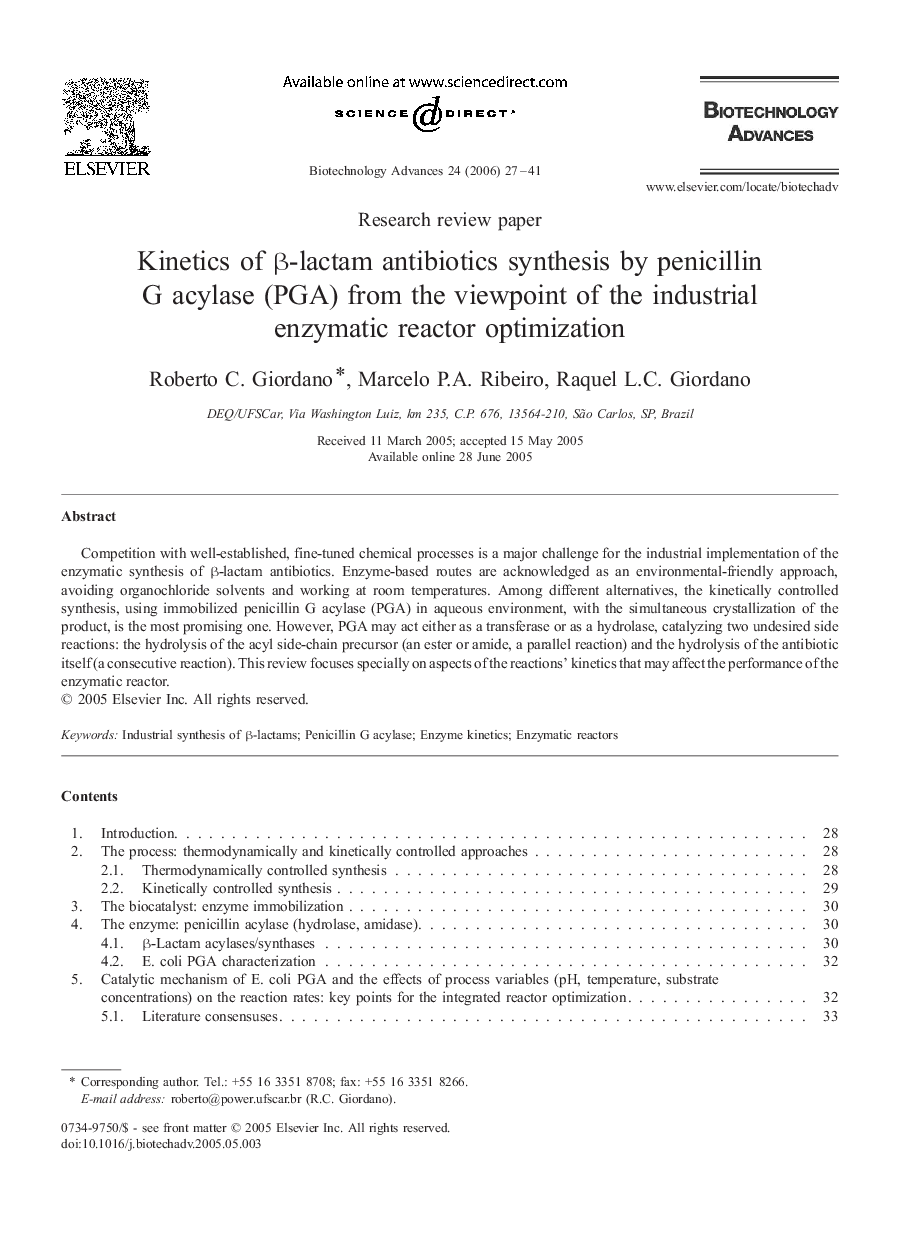| Article ID | Journal | Published Year | Pages | File Type |
|---|---|---|---|---|
| 14744 | Biotechnology Advances | 2006 | 15 Pages |
Competition with well-established, fine-tuned chemical processes is a major challenge for the industrial implementation of the enzymatic synthesis of β-lactam antibiotics. Enzyme-based routes are acknowledged as an environmental-friendly approach, avoiding organochloride solvents and working at room temperatures. Among different alternatives, the kinetically controlled synthesis, using immobilized penicillin G acylase (PGA) in aqueous environment, with the simultaneous crystallization of the product, is the most promising one. However, PGA may act either as a transferase or as a hydrolase, catalyzing two undesired side reactions: the hydrolysis of the acyl side-chain precursor (an ester or amide, a parallel reaction) and the hydrolysis of the antibiotic itself (a consecutive reaction). This review focuses specially on aspects of the reactions' kinetics that may affect the performance of the enzymatic reactor.
